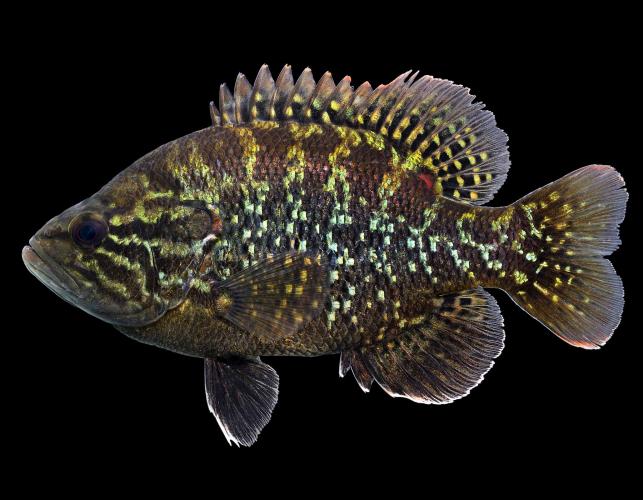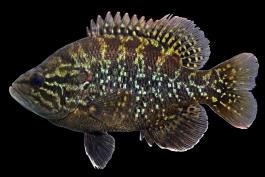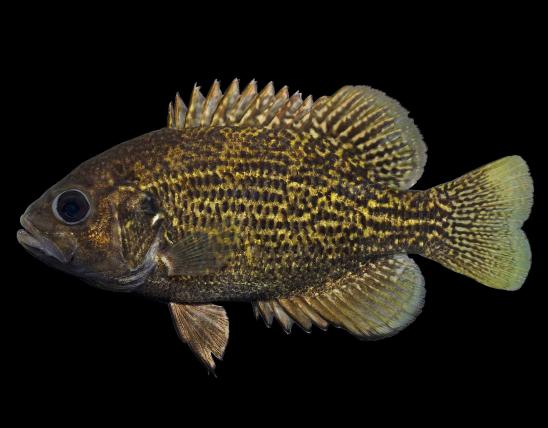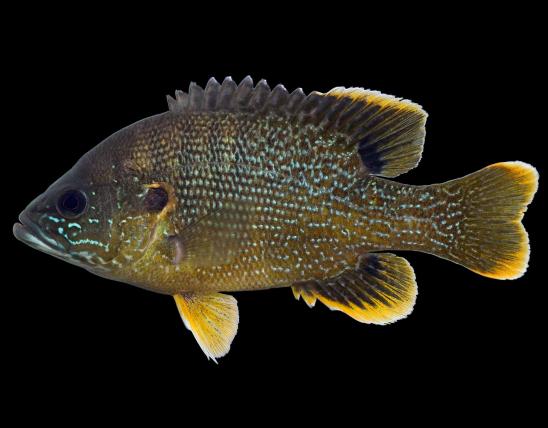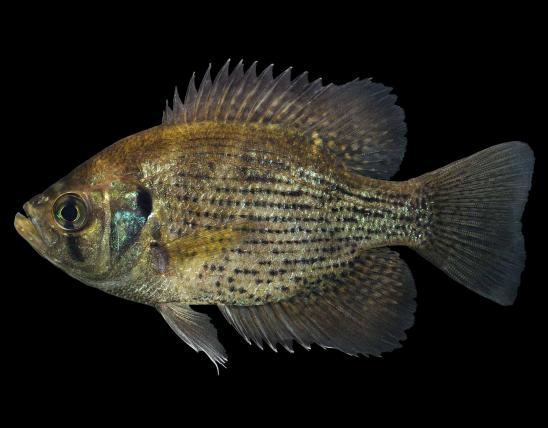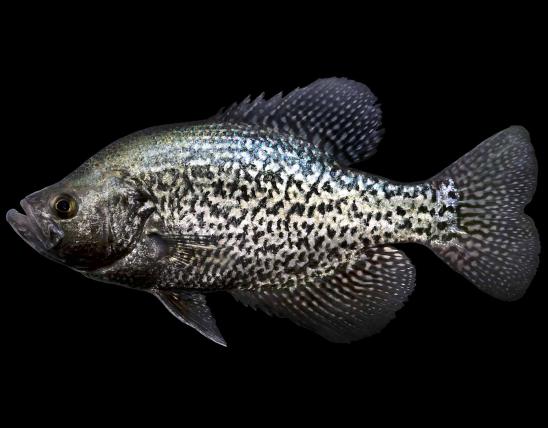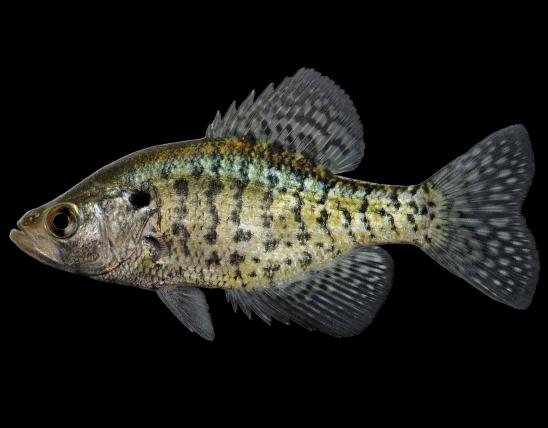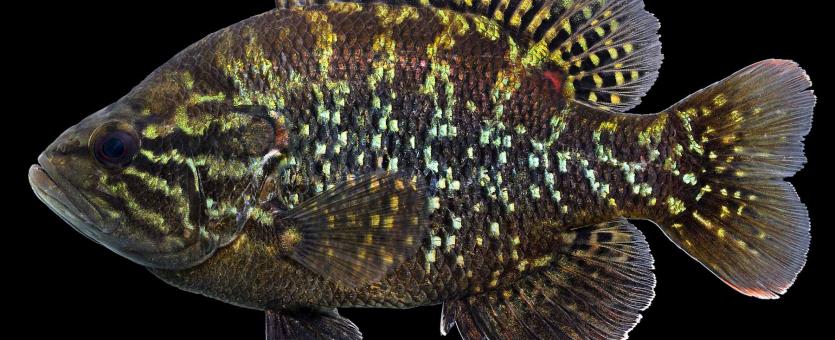
The warmouth is a thick-bodied sunfish with a large mouth (the upper jaw extends to or behind the middle of the eye) and with several distinct dark lines radiating back from the eye. The tongue has a small patch of teeth that can be detected by rubbing a forefinger over the upper surface. The spiny part of the dorsal fin usually has 10 spines, and it is broadly connected to the soft part of the dorsal fin.
The back and sides are rich olive brown with numerous dark brown markings, fading to light yellow on the belly. A characteristic feature is the 4 or 5 reddish-brown streaks radiating from the eye across the side of the head. The iris of the eye is red. Fins are strongly spotted and banded with dark brown (most noticeable on soft dorsal and anal fins). In breeding males, the ear tab is often tipped with bright red and the pelvic and anal fins are tipped with white.
Similar species: The northern rock bass (which also is sometimes called "goggle-eye") has 6 instead of 3 spines at the front of the anal fin.
Total length: to 8 inches; weight: 7 ounces. Maximum is about 1 pound, 4 ounces.

Today occurs widely over the southern and eastern parts of the state.
Habitat and Conservation
In the Bootheel lowlands, most abundant in weedy ditches with little current and in swamps, sloughs, natural lakes, and borrow pits. Elsewhere they are mostly found in oxbow lakes and other overflows on floodplains and in large impoundments. Avoids places with current; prefers clear water and thick growths of submerged vegetation.
In Missouri, the warmouth was formerly found only in the Bootheel lowlands and nearby Ozarks sections. The distribution probably grew because of natural expansion, undocumented introductions, and stocking of "goggle-eye" (no doubt including this fish) in the 1930s and 1940s. Impounding and other habit changes no doubt favored this fish.
Food
Adults feed primarily on crayfish, aquatic sowbugs (isopods), immature aquatic insects, and small fishes. Warmouth fry eat mostly waterfleas and other small crustaceans.
Life Cycle
A sedentary and secretive fish that hides in cover and avoids bright light. Nests from mid-May through August, peaking in early June. Usually located near a stump, rock, clump of plants, or other large object, nests are created on a variety of bottom types, with silt-dusted rubble preferred. Males guard the nests vigorously until the fry depart, threatening intruders by spreading their gill covers while their eyes turn blood red and bodies turn bright yellow.
Human Connections
Because of its frequent low population densities and low average size, the warmouth is of only minor importance as a panfish in our state. Significant numbers occur only in Clearwater Lake, Lake Wappapello, and in the Bootheel's sluggish waters.
Webster's doesn't hazard a guess as to how this fish got its common name, but the scientific name translates to "large-mouthed" sunfish.
Ecosystem Connections
Like most sunfish, the warmouth is an aquatic predator, feeding on a variety of smaller aquatic animals, yet being eaten by larger fish and by terrestrial predators. Like most fish, they’re quite vulnerable as eggs and when young, which is one reason why such vigorous parental care evolved.
